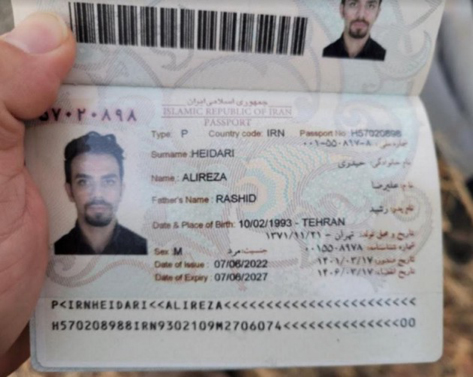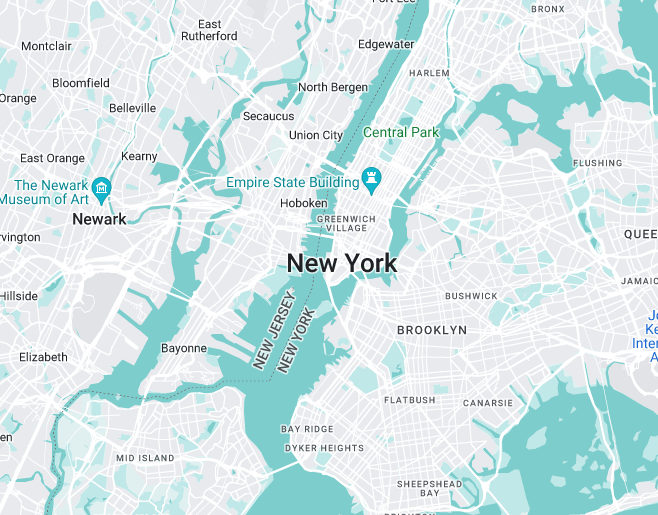On or Off a Terror List, Iranians Being Smuggled in Car Trunks Is Never a Good Thing
How Texas troopers discovered the load. Courtesy of the Texas Department of Public Safety.
AUSTIN, Texas — A Fox News report that Texas state troopers caught an Iranian in the trunk of a smuggler’s car who was on the FBI’s terrorism watch list briefly diverted America’s attention to the border crisis, until the Department of Homeland Security retorted that the illegal immigrant was actually not on the list.
That’s good news. But, on or off any list, Iranians in smuggler car trunks seeking to evade the Border Patrol and disappear into America is always bad news for U.S. national security. This incident showcases a threat that is very much distinct from absorption problems that, for instance, involve illegal immigrants bankrupting U.S. health care systems and evictions from fancy New York hotels of entitled illegal immigrant freeloaders.
The car-trunk Iranian highlights that intercontinental human smuggling networks connect the most adversarial nations in the world to the crumbled southern border defenses along established routes, as detailed in my recent book America’s Covert Border War: The Untold Story of the Nation’s Battle to Prevent Jihadist Infiltration and also in my forthcoming book, Overrun: How Joe Biden Unleashed the Greatest Border Crisis in U.S. History.
Try as American law enforcement stationed abroad might to disrupt them, these smuggling organizations very much still can and do mainline strangers into Texas from countries where Islamic terrorist groups operate — along with those from nations like Russia, Syria, and China.
If this Iranian wasn’t on the list, record numbers from the neighborhood were. Last fiscal year, the Border Patrol apprehended 98 immigrants who were on the FBI’s terrorism watch list — an all-time record — and 38 more have been caught in just October, November, and December, according to U.S. Customs and Border Protection’s public statistics website.
Courtesy of the Texas Department of Public Safety.
The probabilities are sky-high that some watch-listed immigrants were among the estimated 300,000 who evaded the Border Patrol in just the past four months — and the one million who did so last year.
The danger is real, particularly since Iran’s rulers publicly vow revenge for the killing of Iran’s Islamic Revolutionary Guard Corps-Quds Force Gen. Qasem Soleimani. Recent reporting had Iran plotting to assassinate the U.S. ambassador to South Africa in retaliation for the Soleimani killing.
The U.S. security enterprise takes this threat seriously. Americans were behind the September 2020 bust in Brazil of Reza Sahami, a dual citizen of Canada and Iran who was caught guiding a group of seven Iranian nationals in the city of Assis Brasil on the border of Peru. All seven Iranians possessed fraudulent or altered passports from Israel, Denmark, and Canada. The Sahami organization flew Iranians into Canada on fake passports but also had some smuggled over the southern border.
“Sahami has been smuggling criminals across international borders for over 10 years,” said ICE Attaché for Brazil and Bolivia Robert Fuentes in the scarcely reported 2020 ICE press statement.
But even before the Soleimani retaliation threat, American homeland security and intelligence agencies rightly worried that Iran would easily send its spies over the border — or spies of its terrorist offspring, Hezbollah.
One Hezbollah agent from Lebanon, sent over the Mexico-California border in the trunk of a car in 2003, was caught and prosecuted a few years later in Dearborn, Mich., for raising money for Hezbollah and collecting information on political enemies.
More recently, the government has prosecuted U.S.-based members of Hezbollah’s notorious clandestine “Unit 910”.
Court records from the 2018 prosecution of a New York City-based member of Hezbollah’s Unit 910 named Ali Kourani revealed that the defendant’s father, Muhammad Kourani, had “entered the United States illegally on foot”. U.S. prosecutors convicted the son of collecting intelligence of dual Israeli citizens for potential assassinations for Unit 910 from 2008 through at least 2015. Last year, a Lebanon-born Venezuelan on the FBI’s terrorism watch list swam the Rio Grande to Brownsville, Texas — and was inexplicably ordered released into the country despite strong FBI recommendations that he remain detained.
In 2011, the FBI busted an Iranian-American used-car salesman in an Iranian government plot to have him murder the Saudi ambassador in Washington, D.C., after he sought Mexican cartel assassins in Mexico, one of whom turned out to be a DEA informant. Mansour J. Arbabsiar’s plot was quite real; the Iranian intelligence service even sent him a $100,000 down payment for the job. He’s serving a 25-year prison sentence now.
The numbers of actual Iranians apprehended at the southern border are not high, but just a few will do. Some 197 Iranians were apprehended at or between southern ports of entry from 2009 to 2019, according to data provided to the Center for Immigration Studies under a Freedom of Information Act request.
As I recount in my book, while working for the Texas Department of Public Safety intelligence, I once interviewed an Iranian border-crosser who’d been detained. The man turned out to be a former member of the personal bodyguard of Iran’s supreme leader.
I’ve met Iranians en route to the American border, including four in Panama in December 2018, whom I had a chance to interview at a camp in Costa Rica. They had stories of woe and betrayed no hint of deception or threat but did reveal much interest in journey methods.
But what I did or didn’t find that day is quite beside the point.
When Iranians show up at the border and openly present themselves for asylum, American authorities have no way of knowing what’s really in their hearts and minds. Yet it’s a five-alarm fire when an Iranian sneaks into the country in the back of a smuggler’s car. American intelligence will have no choice — rightly — but to assume that Iranian has something to hide.
That is an aspect of the Biden border crisis that warrants inclusion in any public discussion of the continuing catastrophe unfolding down there.







